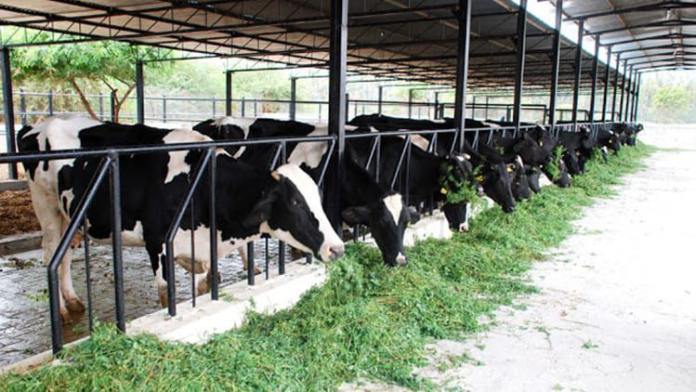Bovine Mastitis: A Crucial Factor for Low Productivity of Dairy Animals in India
Shailesh Kumar Patel1, Jigyasa Rana2, Shailendra Singh1
1Department of Veterinary Pathology, College of Veterinary Science and A.H., Rewa, M.P. – 486001
2Department of Veterinary Anatomy, Faculty of Veterinary and Animal Sciences, RGSC, BHU, Barkachha, Mirzapur, U.P. – 231001
The mastitis is a disease of high impact as far as animal welfare and economic status of farmers is concerned. It adversely affects the profit of farmers leading to huge production losses in the dairy industry globally. Bovine mastitis is the inflammation of the mammary glands or udder. The disease is caused mainly by bacterial infections and is a mutifactorial disease. The contagious mastitis is caused by contagious bacteria including Staphylococcus aureus (S. aureus), Streptococcus agalactiae (S. agalactiae) and Mycoplasma spp. that can be transmitted from infected cows to a healthy cows usually during milking through the hands, towels and milking machine. The other type of mastitis is environmental mastitis which is caused by bacteria that spread primarily outside of the milking parlor means the causative bacteria introduced from the cow’s environment such as bedding material, feed, water, soil, manure and feces.
In dairy cattle and buffaloes, mastitis is an important economic problem globally including India. The bovine mastitis is associated with a daily loss that varied from 1.0 to 2.5 kg of milk during the first two weeks following the onset, and a total loss of 110 to 552 kg during the entire lactation depending upon the parity and time of occurrence. In addition, the mastitis also has a long-lasting effect on milk production as the normal milk yield will never be restored in their remaining part of the lactation. Despite of multiple advanced managemental practices used in different part of world, mastitis is still a formidable disease and is among the major economic issues of farmers and dairy owners.
India is ranked on the top among milk producers globally. The economic loss due to mastitis in India is about Rs. 575 million per annum and it reduces milk by 21%. In addition, the consumption of mastitis-affected milk maybe harmful to humans as antimicrobial resistant pathogens may be transmitted by contaminated unpasteurized milk; hence is also a major public health concern. Due to this zoonotic threats, mastitis milk and milk products made from mastitic milk cannot be consumed and also cannot be sold further, contributing to the economic losses. Infected udder reduces the price of animals in the market and exerts an economic burden on the owner.
The common cause of mastitis include both Gram positive and Gram-negative bacteria such as S. aureus, S. agalactiae, E. coli and Klebsiella pneumonia. Early diagnosis of the mastitis is the major requirement of the dairy sector for clean milk production. The confirmatory diagnosis is crucial for economic and public health point of view. The diagnosis should be early, rapid and accurate for prevention and management of mastitis.
The blanket dry cow therapy, strategic culling, well-defined biosecurity protocols and proper diagnosis are effective measures to control the mastitis. Additionally, combination of antibiotic treatment and culling of unresponsive cows proved crucial in control of mastitis. Common therapeutic measures available for the effective management of mastitis include use of antibiotics, vaccination, herbal therapy, nanoparticle-based therapy, bacteriocins etc. Among the control measures listed above, the antibiotic therapy and vaccination are the commonly used methods for the management of mastitis. However, the vaccination is ineffective against bovine mastitis owing to involvement of variety of microorganisms; nevertheless, S. aureus, S. uberis, and E. coli were used as the major targets for development of vaccine. Even after availability of several commercial vaccines, most of them are costly and failed to provide sufficient protection.
In Conclusion, after diagnosis of mastitis the main challenge for the veterinarian or the farmer is to treat the animals without deteriorating its milk quality and quantity. Several therapeutic strategies like antibiotics, vaccines, bacteriocins, herbal therapy, immunotherapy, and nanoparticle technology have been evaluated for efficacy in treating mastitis, but not a single technique was found to be effective in controlling or treating the disease due to the variable response of etiological agents to the therapeutic techniques. Hence, development of an universal therapeutic regimen is utmost necessary for uniform management of the disease globally and reduce the burden of mastitis from Indian dairy industry. In addition, a standard protocol must be designed to circulate among all the stakeholder of dairy sector for effective management of mastitis in India.


